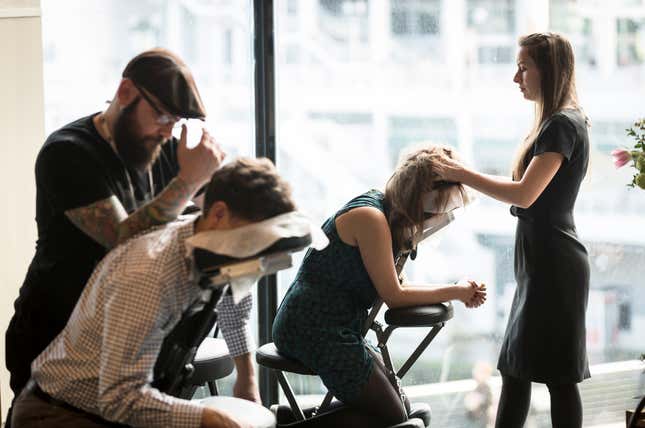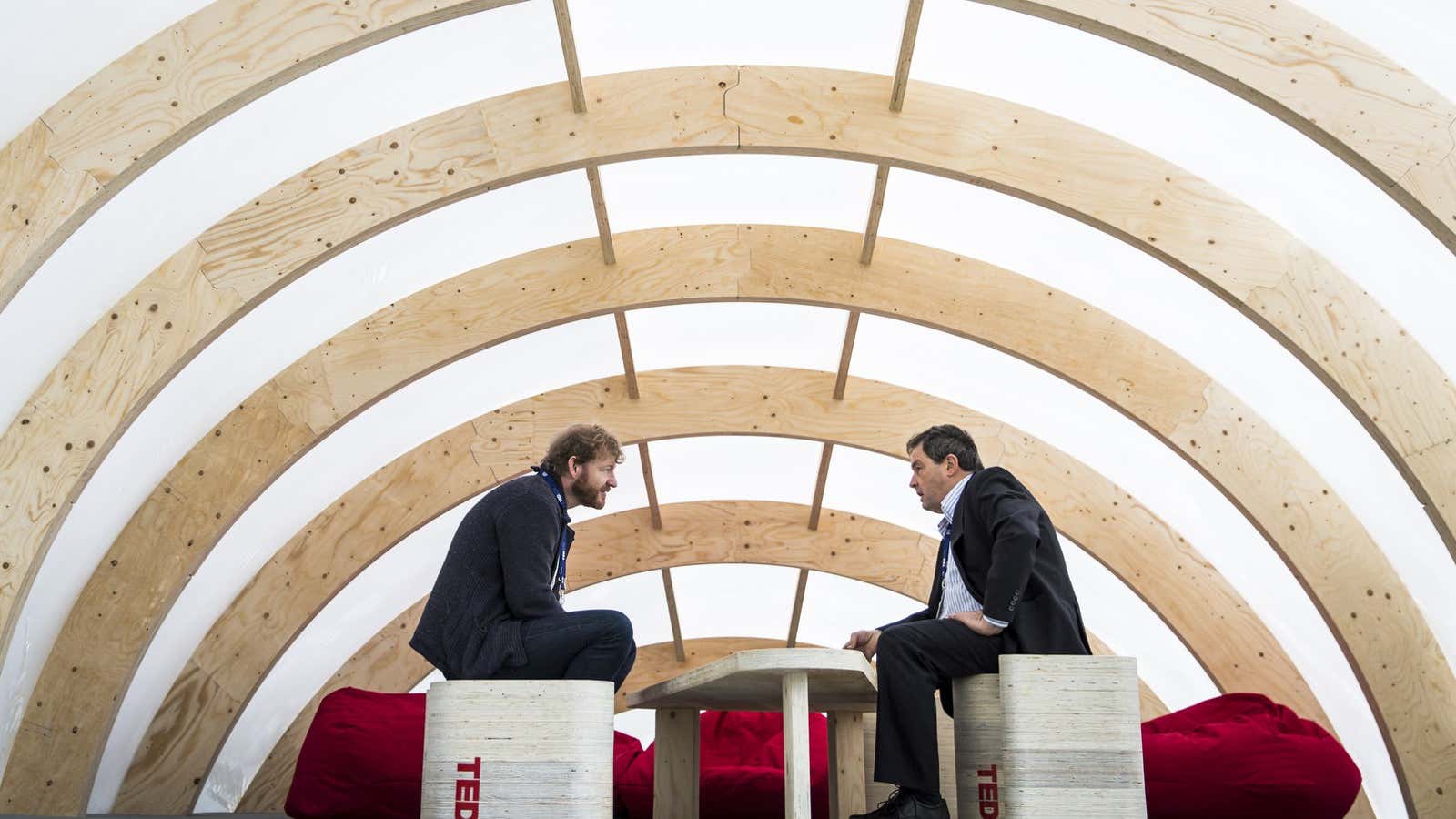From beanbags to ballpit, a constellation of seating options greeted attendees at the TED conference in Vancouver last month. Though TED’s custom-built theater offered comfortable seats for most attendees, simulcast lounges with whimsical beach chairs and grassy knolls were often too tempting to resist.
The informal lounges and pods are designed to spark curiosity and conversation among conference attendees, explains TED producer Katherine McCartney to Quartz. It’s a strategy that mirrors the imaginative office seating trends now popular in the tech and creative industries. But can these strange, weird-looking chairs actually increase our productivity? Can holding a brainstorm sitting on office swings around a conference table spur better ideas?
While experts we consulted are dubious, but there are some proven benefits.
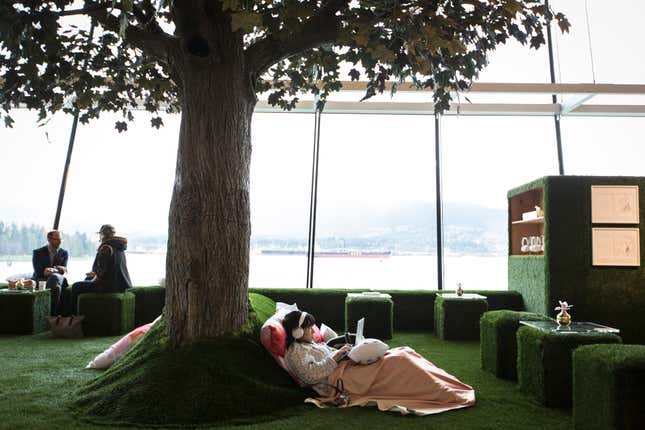
Beanbags in the office?
The now iconic TED beanbag first appeared in 2003 when organizers wanted to foster a more casual atmosphere explains McCartney. Originally called “Sacco,” these large shapeless fabric chairs were designed by three Italian designers in the late 1960s and have since become a staple of rec rooms and starter apartments.
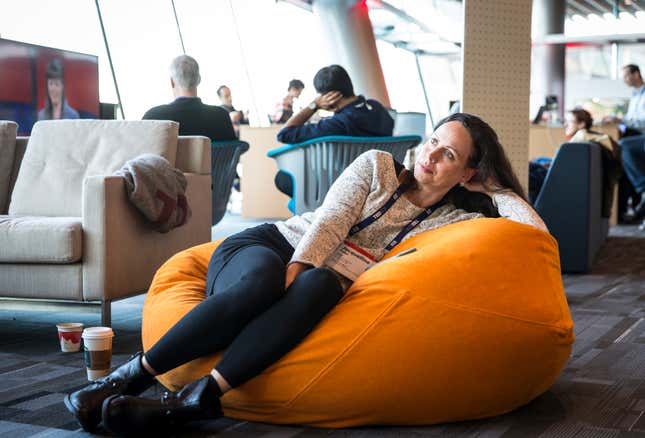
This year at TED, Canadian architect Michael Green and his students created a pair of sculptural cocoon-like huts designed to provided a quiet outdoor canopy for taking phone calls or escaping the cacophony of the other 2,000+ attendees. Most of the covetable chairs throughout the expansive convention center were lent to conference organizers by Steelcase, TED’s longtime partner.
“I’ve seen and sat in my fair share of bizarre and unusual chairs in my lifetime,” says Marilyn Zelinsky-Syarto, the author of several books on creative workspaces, tells Quartz. “One of my favorites is this nest chair, but in concept only!,” describing a lounge chair that literally looks like nest with giant dinosaur eggs.
“Though it looks very cozy, I wouldn’t really want to sit in there with colleagues.”
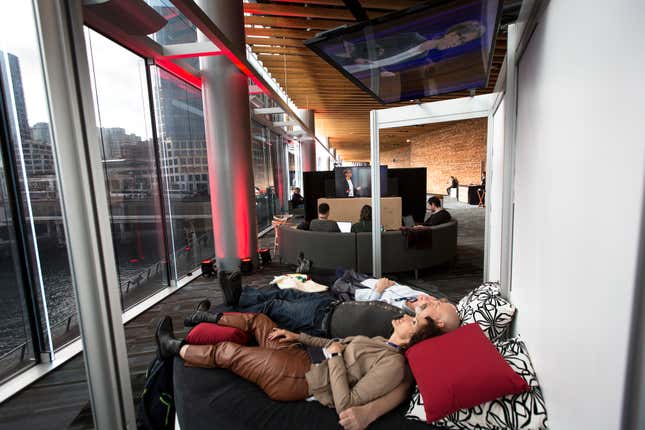
But some odd-looking ergonomic work chairs help allay physical issues and help workers stay focused longer. Zelinsky-Syarto notes that Herman Miller’s classic Aeron Chair—designed based on anthropometric studies and pretty unusual-looking when it first came out in 1994—has been praised for its ergonomic benefits.
🎧 For more intel on sustainable design, listen to the Quartz Obsession podcast episode on office chairs. Or subscribe via: Apple Podcasts | Spotify | Google | Stitcher.
Dorky-looking napping pods in companies like Google and Uber also allow for semi-private power napping that recharge the brain and get the creative juices flowing, says Zelinsky-Syarto. But she adds that she’s skeptical of the design of those helmet-like privacy pods. “I’d be afraid someone would tickle my feet if I dozed off!,” she says.
It’s all about getting close
Creativity researcher Keith Sawyer, a professor at the University of North Carolina, says creativity is less about the shape of the chair and more about the grouping of seating. “It’s not about the chair itself, it’s about the patterns of social interaction that are fostered by the chairs and the spaces,” Sawyer tells Quartz.
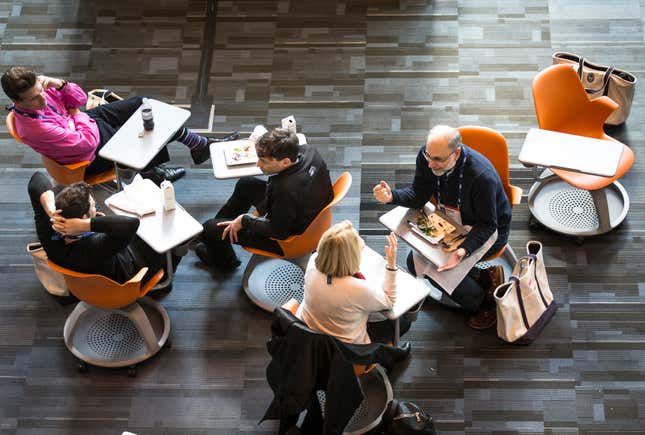
His observation echoes the philosophy Steve Jobs subscribed to when designing offices. The Apple founder was intrigued by a legendary 1940’s social psychology experiment that proved how friendships among different personalities could be forged if they were close enough to one another. “Friendships are likely to develop on the basis of brief and passive contacts made going to and from home or walking about the neighborhood,” concluded the researchers Leon Festinger, Stanley Schachter, and Kurt Back, of their work in the so-called Westgate West studies, named after the housing development they used as a research lab.
The Westgate West study led to development of the theory of ”propinquity,” which posits that nearness a main factors for friendship and even romance. Accordingly, Jobs reconfigured departments at Pixar so engineers, animators, editors and executives could interact and their ideas could cross-pollinate and spur greater innovation.
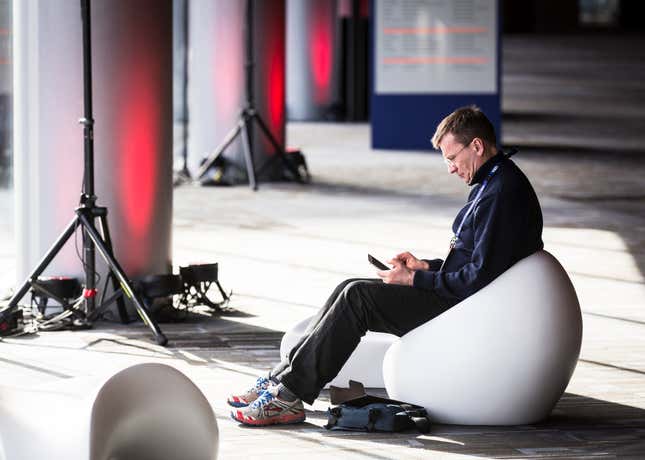
“Creativity research shows that you’re most creative when you alternate between solitary time and group time. Traditional offices keep everyone apart and don’t provide good options to support spontaneous conversations,” Sawyer tells Quartz.
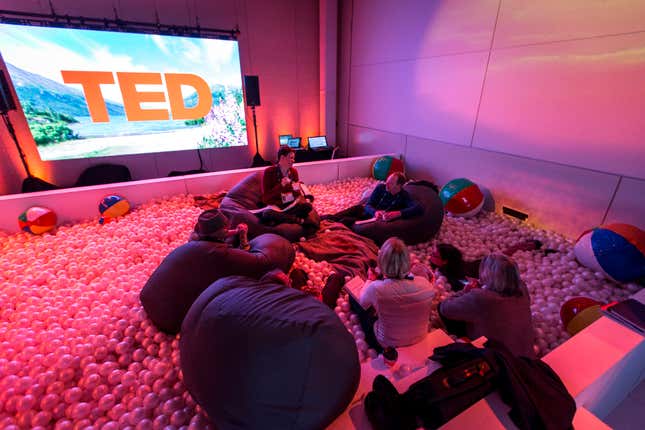
Neuroscience research also suggests that a relaxed mind often generates the most breakthrough ideas. Which might explain why these weird backward chairs at TED were the most coveted of all.
